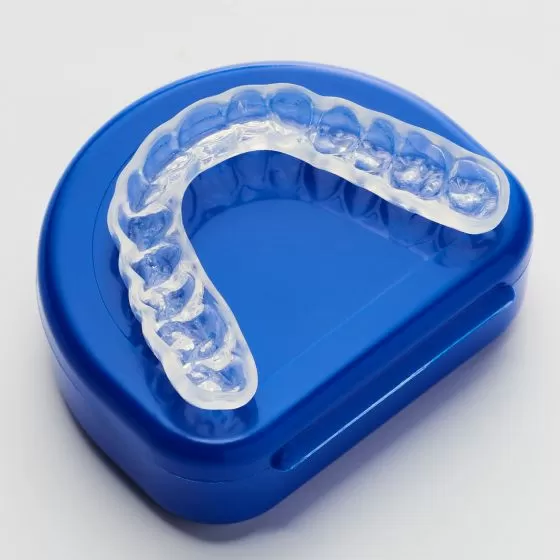Types Of Fillings And Dental Procedures For Cavities
When you have a plaque build-up on the teeth, it can cause cavities and gum disease. If you experience sensitivity or pain in your teeth, it is best to visit a dental office as soon as possible. This way, a dental professional can look at the problem and advise you on what to do. If you treat a cavity before it causes you any pain, there will probably be no need for costly treatment. There are several treatment options for cavities, depending on your specific situation and how severe it is. Dental fillings are used as a treatment option in cases where a cavity is discovered.
Dental fillings or restorations are best used when tooth decay has gone beyond the early stages. The fillings are made up of different materials such as dental amalgam, porcelain, or resin. Your dentist will discuss dental filling options with you before the procedure to decide which one works best for you.
Planning And Consultation
Before getting a tooth filling, the dentist will first inspect your teeth to determine the best option for you. The dentist may also use an x-ray to properly identify the severity of the decay. Dental fillings are usually recommended for decay and minor tooth repairs in Kyle. However, if your case is more serious, the dentist may advise you to consider other treatment options such as dental implants or crowns.
The Types Of Dental Fillings
There are different kinds of dental filling materials available today in different strengths and colors. However, several factors will help you determine the best filling for you, such as:
- Your insurance coverage
- The cost of the filling material
- The severity and the location of the tooth decay
- Your aesthetic preferences
- Your dentist’s recommendation
Glass Ionomer/Resin Fillings
This type of filling is made using a blend of glass and acrylic. It also releases fluoride that helps to protect and strengthen your teeth. They are very fragile; hence they are not used in areas of the mouth that experience extreme pressure. Since they are less durable than other fillings, they have to be replaced within five years.
Ceramic Fillings
Ceramic or porcelain dental fillings have the same color as natural teeth. This means that tooth stains are less likely to show on them over time. However, they are also more delicate compared to metal fillings and are usually more expensive. It is essential to visit the dentist regularly if you get porcelain fillings.
Metals
Silver and gold are the most commonly used metals for cavity fillings. Gold fillings are more costly than silver amalgam fillings. However, some people prefer them compared to silver ones because of their appearance. They are the strongest and most long-lasting material for cavity fillings. You can stay with metal fillings for up to 15 years before replacing them.
Composite Fillings
These types of fillings are also known as filled resins or composites. They are typically made from a combination of quartz filler or glass and can be made to look just like your tooth. Composite fillings are also quite strong. They are ideal for small to medium cavities in parts of the mouth responsible for moderate chewing. They also bonded to the tooth directly, so they offer better support than other fillings.
Amalgam Fillings
Dental professionals have been using amalgam fillings for decades. It is one of the most studied materials for filling dental cavities. Amalgam fillings are very strong, so they are ideal for tooth cavities in the back of the mouth. This means they can be used for the molars, which do most of the chewing. They are made using a combination of different metallic elements such as zinc, copper, mercury, silver, and tin. They are also noticeable when you smile or laugh because of their dark metallic color. Amalgam fillings are among the cheapest materials for filling cavities.
What Is The Procedure For Dental Fillings?
Before applying a dental filling, the dentist will apply a local anesthetic to numb the affected area. Next, they will drill the decayed area using a laser. Any remaining debris or bacteria will be cleaned from the area using an acid gel. The dentist will then apply your desired filling to the cavity, and the finished tooth may be polished to finish up the procedure. The process takes just a few minutes. Your mouth will be numb for a couple of hours after the procedure. It is always good to have your dentist’s contact information on you if you have any complications or questions afterward.
Follow Up After A Dental Filling
After the procedure is done, you will spend some time with the dentist to discuss how to prevent decay from forming near or underneath the filling. You will be advised to maintain good oral care routines after getting a dental filling. This includes brushing your teeth using fluoride toothpaste, using an interdental cleaner, and flossing daily. It is normal to experience some discomfort several days after getting a cavity filling. However, if you feel any pain after a dental filling, contact your dentist to advise you on what to do. As for your diet, it is best to avoid sticky and hard foods for at least 24 hours after having the procedure. A follow-up appointment may also be necessary for the dentists to check on the progress of your tooth filling and perform a professional cleaning.
At Kyle Parkway Dentistry, we offer our clients professional advice and services on your ideal dental solutions. We aim to provide cosmetic, preventative, and restorative dental services to meet your needs. We are committed to helping you with any dental problems you have. You can visit our website at https://www.kyleparkwaydentistry.com/ to learn more about what we offer.
Kyle Parkway Dentistry
4650 S FM 1626 #104 Kyle, TX 78640
5122560105
Find us on Social Media
https://www.facebook.com/Kyleparkwaydentistry/
https://twitter.com/KyleParkwayDent
https://www.youtube.com/channel/UCHIp9G8LRcKWlmiPOAOImJg
https://www.instagram.com/kyleparkwaydentistry/






